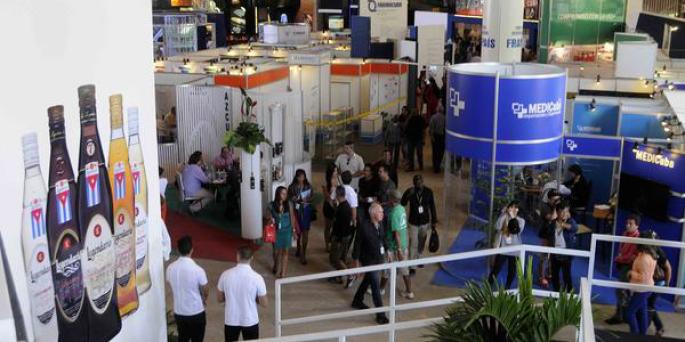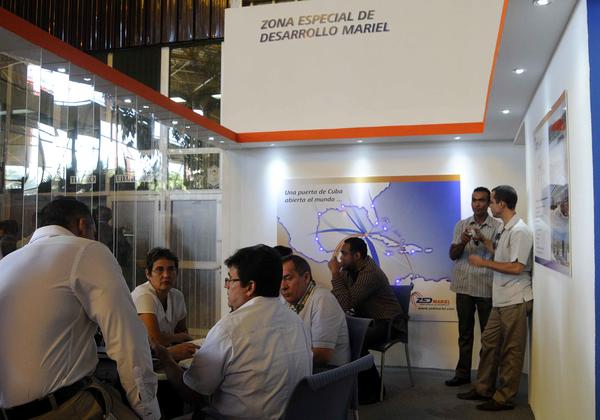
Cuba unveils foreign-investment portfolio
HAVANA — The big news at the 2014 Havana International Fair was the launching of the Portfolio of Opportunities for Foreign Investment.
During the process of approval of Law 118 [on Foreign Investment], the authorities stressed the pertinence of that document, explaining that in the past any foreign businessman could come and tell us what he wanted, without a well-defined counterproposal.
The principal benefit of the Portfolio is that it indicates a truly proactive stance on the part of Cuba, indicating clearly where and how investments should be directed.
“We’re going to try to promote foreign investment on the basis of a broad and diverse portfolio, because we want to encourage foreign capital to invest on those projects that we have identified as necessary for the development of our economy,” emphasized Rodrigo Malmierca, minister of Foreign Trade and Investment, on Monday (Nov. 3) at the Fair’s opening.
The Portfolio contains 246 proposals, whose total value is estimated at $8.7 billion. Already, more than 20 other business deals are being negotiated, according to unofficial sources. According to Malmierca, the initiatives are not a list made up by the government but were submitted by Cuban companies in terms of their priorities.
Mercedes Pizarro, an official of Spain’s ICEX Exports and Investments, said that fomenting the entry of foreign capitals becomes easier with precise ideas of what is being sought.
“One can ‘sell’ the framework of activities, but what the companies want to see is a concrete project, where they can see what they can contribute,” she said.
It is noteworthy that only state-run entities are making the proposals, whereas the law says that cooperatives can also apply for foreign capital. Nevertheless, projects like the production of peanuts, citrus and other fruits will be open to cooperatives and individual producers.
Last March, during the debates at the National Assembly of the People’s Power, Marino Murillo, vice president of the Council of Ministers and minister of the Economy and Planning, said that farm cooperatives today manage 70 percent of the land, so they cannot be ignored.
“What’s being established is that the State must always participate, to prevent the concentration of property,” he said.
The Portfolio is divided into two sections: one for the possibilities in the Mariel Special Development Zone, and another for the sectors of energy, sugar, transportation, construction, agriculture, forestry, food production, health care, industry, tourism, mining, commerce, and the pharmaceutical and biotechnological industries.
While that distribution by economic areas contributes to a better order, an eye must be kept on the synergy and interconnections between the ministries and other institutions because, in practice, they often function as isolated compartments.
Synergy becomes a fundamental condition, inasmuch as, by encouraging foreign investment, the State expects to create productive linkages, so that, for example, a dairy complex should always be supported by well-developed cattle farms.
The greatest weakness of this first Portfolio, Malmierca said, might be the insufficient promotion of such link-ups. That flaw will be remedied when the next Portfolio is drafted.
Later, the projects will have to enjoy flexibility. According to Malmierca, the initiatives of the current Portfolio allow for the possibility that other initiatives will emerge, which can be adjusted and negotiated.
“It is true that you know what must be done here [in Cuba],” says Pizarro, the Spanish official. “But you should also listen to private initiative when it comes to [Cuba], because it brings ideas to the table. The point is to make that combination viable.”
The Portfolio will be updated every year, which will entail a continuous process of improvement.
“We have to draft proposals that will really make it attractive for an investor to bring his money here,” said Deborah Rivas, director of Foreign Investment at the Ministry of Foreign Trade.
Feasibility research was done for most of the opportunities presented on Monday. They involved market potentials, modes of investment, approximate amounts, expected results, contacts, etc.
Although feasibility studies would seem to be a sine-qua-non condition, the fact is that they constitute a step forward, because such analyses are not usual in the Cuban entrepreneurial environment, due to difficulties in the recording of, and access to, the necessary figures and information.
Artemisa, La Habana, Ciego de Ávila, Camagüey, Holguín, Cienfuegos, Sancti Spíritus, Villa Clara and Matanzas are the provinces where most of the projects can be found, although the projects can be found throughout the island, including the Isle of Youth. The number and location of the sites show a surge from the modest proposals that the Chamber of Commerce used to present to the trade missions arriving in Havana.
This leads us to the question of local projects associated with foreign capital. In the National Assembly debate over the bill that became the Law on Foreign Investment, one deputy asked if a business engagement with foreign equals in his community would be permitted, and the answer was positive.
However, at first sight, the Portfolio of Opportunities contains a predominance of large-size businesses — to the detriment of medium and small businesses — a tendency that was also present in the old Law 77 [on foreign investment].
The relative disproportion between the number of initiatives by sectors responds to a combination of national imperatives, as in the case of oil and farm foods (with 86 and 32 projects, respectively), and acquired competence, as in the case of tourism, which offers 56 proposals.
On the other hand, it is hard to understand why sectors as impaired as transportation and wholesale commerce offer so few possibilities — three and one, in that order.
Another advantage of the Portfolio is that the potential deals are preceded by information about the existing sectorial policies, the legal framework of the activity, and statistics about the human capital, the productive structure, the leading items, the basic results, etc. Somehow, this reduces the perception of an economy that is not transparent enough.
While the promulgation and enactment of Law 118 was the starting pistol shot, the announcement of the Portfolio of Opportunities is the first run around the track. It establishes a “from now on” situation.
As explained by economist Omar Everleny, the legal framework by itself is not enough. It is necessary to fine-tune the nation’s entire business environment, i.e., the banking system, Customs and the tax system, telecommunications, the domestic market and real-estate transactions.
Decisive aspects will be the promotion of trade, the participation of business enterprises in international fairs and similar events, high-level visits from abroad, commercial delegations and, in general, the creation of mechanisms and spaces for a much more aggressive marketing.
And this involves not only the institutions that specialize in trade but also the attitude of the Cuban business companies and the measures adopted to give them greater power and autonomy.
That is another reason that Malmierca underscored the importance of being in contact with our partners abroad.
“Governments can do much to create a favorable climate,” he said, “but, in the final analysis, the business must be transacted by the companies.”
Months ago, Deborah Rivas, Foreign Investment director at the Ministry of Foreign Trade, said that “the fundamental process is to enable our comrades, the potential national investors, to submit to the foreign investors projects that are feasible and attractive.”
Still on the drawing board is the relationship between planning and the market, lest one neutralizes the other; the possibility of taking economic advantage of the links for political communion, especially in the hemisphere; the reduction of the discretion and centralization of decisions; and the de-concentration of the Cuban foreign sector in terms of countries and products.
The time has come and we need to act now.



